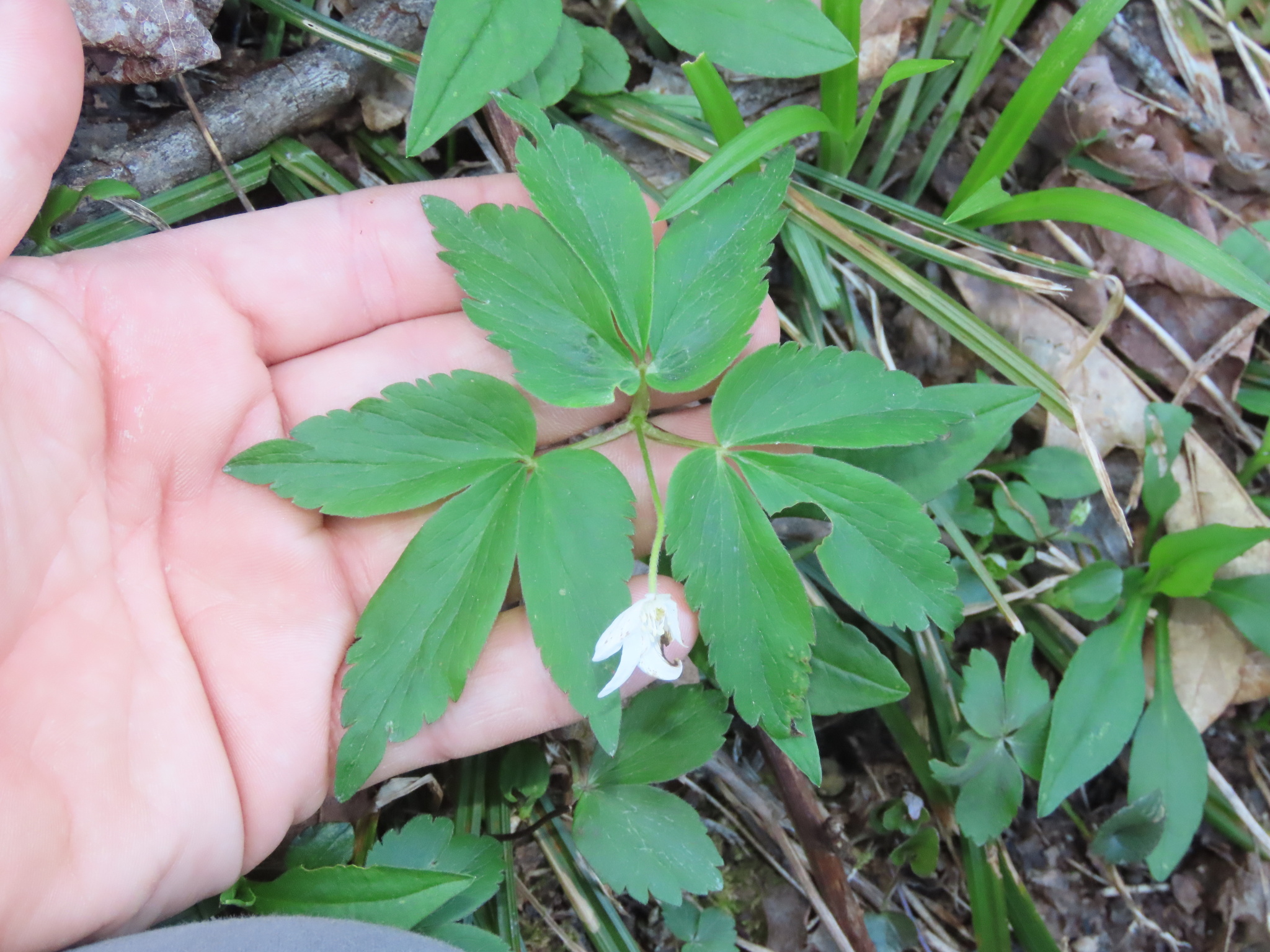Map Snapshot


5 Records
Seasonality Snapshot
Source: Wikipedia
| Anemonoides lancifolia | |
|---|---|

| |
| At the Uwharrie National Forest in North Carolina | |
| Scientific classification | |
| Kingdom: | Plantae |
| Clade: | Tracheophytes |
| Clade: | Angiosperms |
| Clade: | Eudicots |
| Order: | Ranunculales |
| Family: | Ranunculaceae |
| Genus: | Anemonoides |
| Species: | A. lancifolia
|
| Binomial name | |
| Anemonoides lancifolia (Pursh.) Holub
| |
| Synonyms[1] | |
| |
Anemonoides lancifolia (formerly known as Anemone lancifolia), the lanceleaf anemone or mountain thimbleweed, is an herbaceous plant species in the family Ranunculaceae.[1] The genus occurs in the Southeastern United States. Plants grow 20 to 30 cm tall, growing from a horizontally-orientated rhizome, flowering mid-spring to early summer. The flowers have white sepals that are 12–20 mm long. This species much resembles Anemonoides quinquefolia, of which it was formerly considered a subspecies,[1] except that it is larger growing. After flowering, fruits called achenes are formed in a small cluster; each achene is 3.5–5 mm long, lacks wings and has a straight or partly curved beak that is 1–1.5 mm long.
Both the Latin and common names reference the leaf shape, with narrower leaflets, with a distinctive serration when compared to A. quinquefolia.
It is native to the eastern United States in North Carolina, South Carolina, Virginia, Maryland, and West Virginia. Anemone lancifolia is normally found growing in rich damp soils in woods.[2]
References
[edit]- ^ a b c "Anemonoides lancifolia (Pursh) Holub". Plants of the World Online. Royal Botanic Gardens, Kew. Retrieved 9 August 2020.
- ^ Flora of North America Vol 3, Magnoliophyta:Magnoliidae and Hamamelidae. Flora of North America Editorial Committee. Oxford University Press. 1997. pp. 139–158. ISBN 0-19-511246-6.
{{cite book}}: CS1 maint: others (link)

